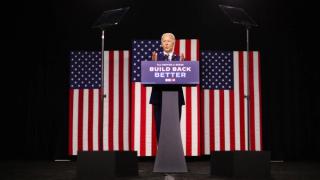Presidents love infrastructure. From President Trump’s promise to build “gleaming new roads, bridges, highways, railways, and waterways” to President Obama’s 2009 Recovery Act that poured billions of dollars into infrastructural projects, the promise of renewed infrastructure is the reliable, uncontentious, well-worn policy track American presidents can’t stop taking.
Infrastructure is certainly politically lucrative. For one, infrastructural developments offer irresistible opportunities for politicians to take credit for completed projects, most commonly in the form of ribbon-cutting photo ops. Infrastructure is also strikingly popular among the public, with almost every Gallup poll from the past five years highlighting its high support among American voters in both political parties.
Perhaps more significantly, infrastructural investments are touted as ‘macroeconomic multipliers’ with spending having a stimulatory effect on GDP, offering a boost to employment in certain industries, and a promise to avoid economic costs associated with defective public infrastructure. These links are well-acknowledged by political commentators and politicians alike, often invoking anecdotes of how President Franklin Delano Roosevelt’s infrastructure “saved” the United States from ruin after the Great Depression, or how President Eisenhower’s post-war Interstate Highway System made America an economic powerhouse.
Given the bipartisan popularity and economic promise of infrastructure, it should come as no surprise that President Biden, has also long entertained lavish infrastructure dreams.
Given the bipartisan popularity and economic promise of infrastructure, it should come as no surprise that President Biden, has also long entertained lavish infrastructure dreams. On 31 March, he released the second arc of his ‘Build Back Better’ agenda, the American Jobs Plan. In it, Biden promised sweeping improvements to America’s transportation systems, utilities, manufacturing and ‘care economy’ all while creating “millions of good jobs”.
In August, those dreams came closer to reality in the Biden administration’s first major legislative victory – the successful Senate vote (69-30) to pass the US$1 trillion Infrastructure Investment and Jobs Act. The plan emerged from weeks of intense bipartisan negotiations over priority projects and ‘pay-fors’ that teetered perilously on the edge of collapse more often than successful compromise.
While some considered the president’s push for bipartisan negotiation to be “a relic of an earlier age”, Biden did not back down. As Senator Chris Murphy (D-CT) pointed out during the Senate negotiations, “this process is complicated, it’s tricky, but it speaks to who this president is. He wants to bend over backwards to get a bipartisan agreement.”
It is perhaps not just the political and economic benefit that Biden hoped to receive from the bipartisan negotiation of the infrastructure bill, but instead a chance to earn the trust of his constituents, and to prove that, using his 50 years of Washington experience, he knows how to govern and how to deliver.
By producing a bill with not only Republican support but strong Republican support, it signals the president’s commitment to restore American’s faith in their government and in democratic processes.
As Biden said in his remarks shortly after the bill passed, “I know compromise is hard for both sides, but it’s important – it’s important, it’s necessary – for a democracy to function… Today, we prove that democracy can still work.” By producing a bill with not only Republican support but strong Republican support, it signals the president’s commitment to restore American’s faith in their government and in democratic processes.
It is not yet clear if, how or when such onerous bipartisan negotiation may be demanded from lawmakers again. However, what is clear is moving forward Biden will look for opportunities to demonstrate Congress can be ambitious and functional, and that he can be trusted to deliver on his word. This is not just for the purposes of building trust among his constituents, but also among America’s allies and partners, as the president looks to dispel the myth that “democracy can’t compete in the 21st century… because it takes too long to get consensus.”
The president is confronting one of the most turbulent and fraught periods of his presidency to date. In the past month, his approval rating fell below majority support for the first time, COVID-19 numbers rose, vaccination numbers slowed and several US allies and partners criticised the administration for their chaotic withdrawal of troops from Afghanistan.
Now, the pressure for President Biden to prove his doubters wrong and revamp America’s democratic image has only increased. And so, negotiations over the Infrastructure Investment and Jobs Act, and most recently the US$3.5 trillion House budget reconciliation, are all the more important. Presidents love infrastructure. But, Biden now needs infrastructure to build his image back better.






